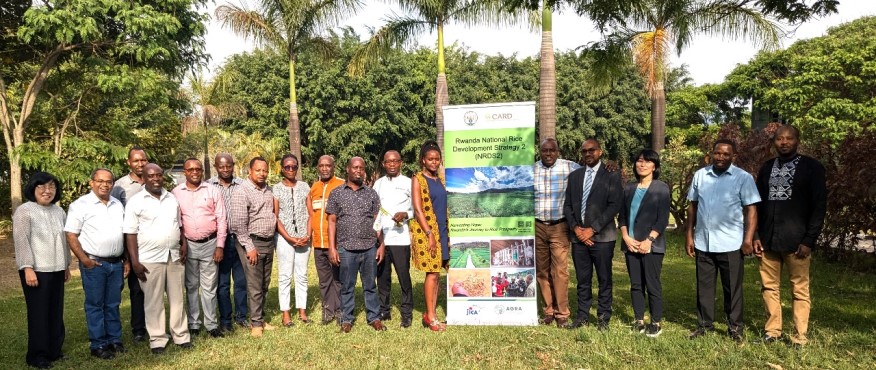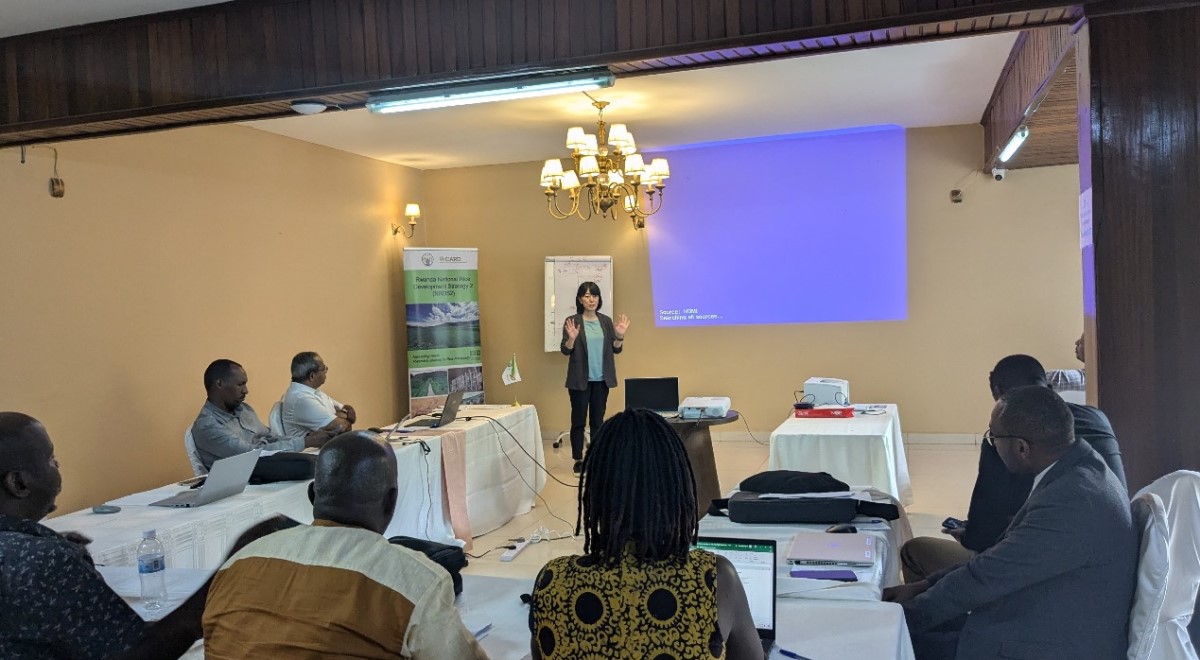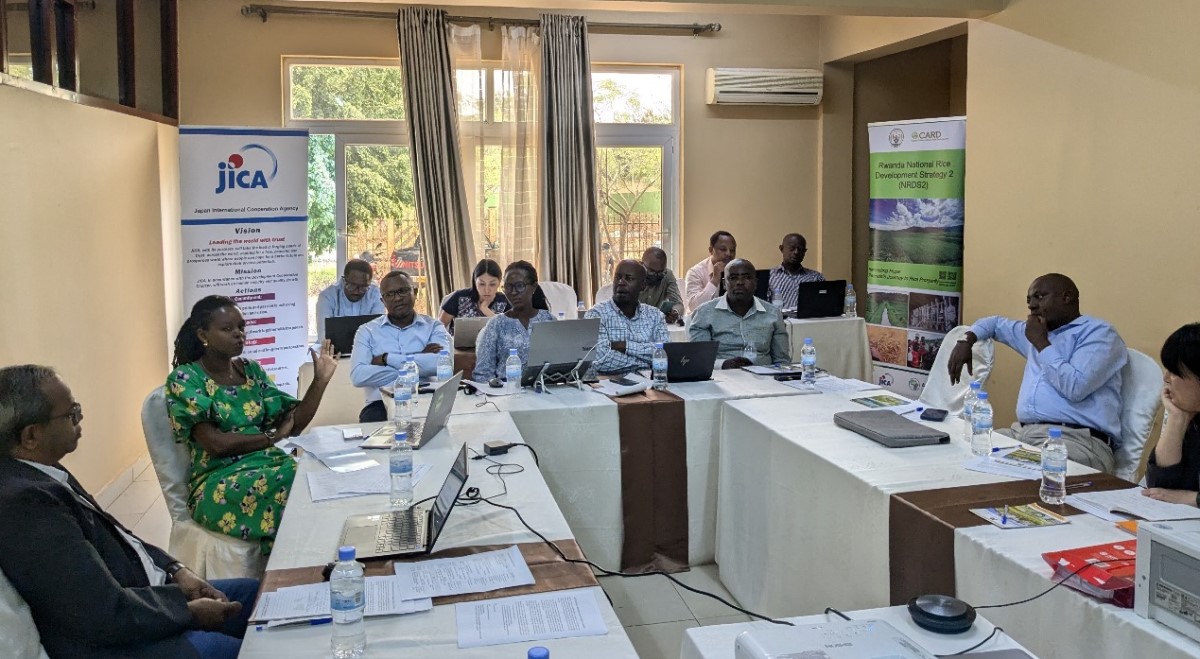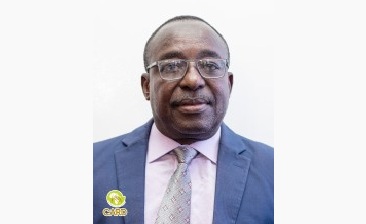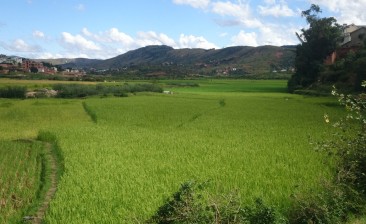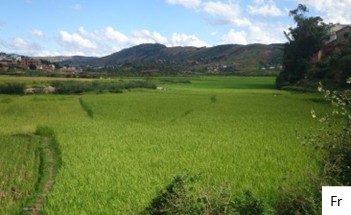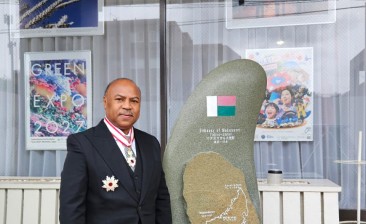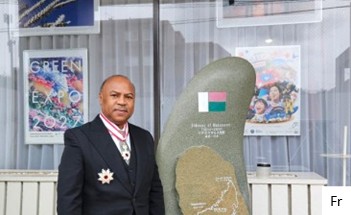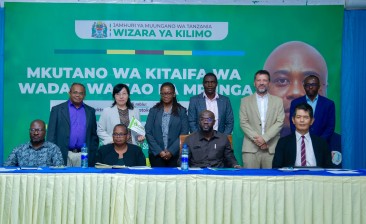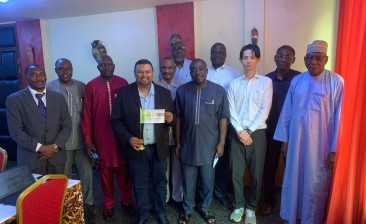Rwanda, September 2024
CARD Workshop on Monitoring & Evaluation of NRDS-2 in Rwanda
Rice has become a major staple food crop in Rwanda. Recent household surveys reveal that budget allocation for rice (8.5%) is higher than traditional food crops such as potato (6.5%) and beans (7.5%). Driven by market demand, importation of rice in Rwanda has reached 503,583 tons of milled rice in 2022, mainly from Asia and Tanzania. Owing to competitive prices, supply-volumes, grain features and cooking qualities; the marketability of locally produced rice is under constant threat from the imported rice.
With CARD’s technical assistance, Rwanda had formulated its National Rice Development Strategies (2021-30). It aims to achieve 90% self-sufficiency by increasing the local paddy production by 2.4-fold from 180,499 tons to 434,533 tons by 2030. To help assess the progress on the development of the rice sector through the implementation of the NRDS-2, CARD assisted conducting a baseline survey on rice value chain in 2022. In July 2024, CARD discussed with NRDS focal point and JICA-Advisor for Ministry of Agriculture and Animal Resources (MINAGRI) on collecting data for 2023-24 under its monitoring & evaluation (M&E) framework. It was agreed that the NRDS taskforce members will collect secondary data from farmers’ cooperatives, millers’ association and other institutions for the CARD-indicators and Rwanda-specific indicators identified from the baseline survey.
Rwanda’s NRDS focal point recently requested CARD Secretariat to organize a workshop for the NRDS taskforce members to (i) update the data collected for the various indicators, (ii) analyze gaps in funding, (iii) update project concept notes for NRDS-2 implementation, and (iv) prepare for Annual Rice Sector Review Meeting (ARSRM). This report summarizes the outputs from the workshop.
Workshop Activities and Outputs
The NRDS taskforce members organized the workshop at La Palisse Hotel in Nyamata (Bugera District) between 17th and 19th of September. About 12 taskforce members and JICA-Advisor for MINAGRI participated in the workshop. Dr. Lillian Muasa (CARD’s M&E Advisor) joined online.
a) Consensus on indicators and data collection protocols
Baseline survey (2022) conducted in Rwanda proposed 21 indicators for monitoring the progress of rice sector development. These included the 12 common indicators proposed by CARD [4 overall indicators, 2 indicators each under Resilience (R), Industrialization (I), Competitiveness (C) and Empowerment (E)] and 9 additional Rwanda-specific indicators (2 each under R, 3 each under I and C, and 1 under E). With CARD’s recent inclusion of ‘retail price (P)’ as an additional indicator under its framework, the total number of indicators for Rwanda was set at 22.
The baseline survey proposed primary data collection methods for 8 of these indicators and secondary data collection methods for the remaining indicators. Due to human- and financial resource constraints, the NRDS focal point earlier agreed to collect the required data for all the 22 indicators through secondary sources. During the workshop, the taskforce members apprised the secondary data collected so far and discussed the challenges in accessing secondary data for some of the indicators.
Owing to either redundancy or non-sustainable issues in collecting the secondary data, the taskforce members decided to drop 1 indicator each under I, C and E. The taskforce members however added a new indicator (number of accredited rice mills) under C, thus re-setting the total number of M&E indicators for Rwanda as 20. Definition, methodology for collecting secondary data and data-sources, and members responsible for collecting the data were established through mutual consensus. It was agreed that the data for the pending indicators will be collected and finalized by the end of September.
b) Analyses of gaps in current interventions
Since the launch of the NRDS-2, development partners such as World Bank, KOICA, AfDB, IFAD and Exim Bank of India have established rice-related projects in Rwanda. Using a sub-sector intervention element matrix (SIEM), the taskforce members placed the projects according to their major expected outputs. To identify gaps in funding, the taskforce members then assessed the requirements of funding across the value chain using the SIEM. Using color codes (red: extremely inadequate, orange: inadequate, white: non-urgent, light green: sufficient, and green: extremely sufficient), the taskforce members filled the cells in the SIEM (gaps), as shown in the table below: –

c) Review of concept notes on NRDS-2
In 2021, JICA invited application for a CARD-grant from Rwanda’s NRDS taskforce, while the NRDS-2 was in a drafting stage. Subsequently CARD helped taskforce members in preparing 7 concept notes that could lead to advancements in some of the key approaches of the NRDS-2 draft such as marshland reclamation and rehabilitation, mechanization and seed systems. During the present workshop, the taskforce members were given a task of updating and adding new concepts that will lead to concrete implementation of the NRDS-2.
The participants at the workshop were organized into two groups under separate group leaders, based on their area of expertise. While group-2 looked at 4 concept notes (CN # 1, 3, 6 and 7), group-2 reviewed CN # 2, 4 and 5. Both groups decided that they could not add new concept notes due to limited time at the workshop. Hence, the 7 project concept notes were updated with additional components and geographical locations, based on the on-going interventions by government and development partners. Following group work, the leaders presented the updated concept notes for a peer-review in a plenary session. Based on feedback from this plenary session, the group leaders agreed to further revise the concept notes. The table below lists the titles and proposed budget estimates for the concept notes.
| CN # | Title | Budget (USD) |
| 1 | Reclamation of marshlands for sustainable rice production in Rwanda | 48,390,000 |
| 2 | Prefeasibility studies on expansion of area under rice cultivation in Rwanda | 600,000 |
| 3 | Increasing food production in Rwanda through improved management of catchment areas of the rice-growing marshlands | 7,655,000 |
| 4 | Improving productivity and marketability of rice in Rwanda through mechanization | 6,000,000 |
| 5 | Sustainable and market-driven rice production systems in Rwanda | 5,474,500 |
| 6 | Rehabilitation of marshland irrigation infrastructures in Rwanda for increased rice production | 13,605,000 |
| 7 | Increasing total factor productivity through promotion of mechanization in smallholder rice farms in Rwanda | 5,000,000 |
d) Planning for ARSRM-2024
The participants were confident that the remaining data collection tasks under M&E will be completed by the end of September and that first Annual Rice Sector Review Meeting (ARSRM) could be organized in Kigali on 5th December, 2024. They will invite about 80 stakeholders representing public sector, private sector, development partners and farmers’ cooperatives for the meeting. It is estimated that about 7,500 USD might be required for holding this meeting. JICA-Advisor for MINAGRI in collaboration with JICA-Rwanda office will provide non-budgetary administrative assistance in arranging the logistics for the meeting.
The taskforce members have agreed to share the responsibilities of presenting an overview of the rice sector, progress on M&E indicators, SIEM and concept notes. They have also decided to invite two other DPs for sharing their views on rice sector development. In this regard, the NRDS focal point will contact World Bank, KOICA, JICA and AfDB for speaking at the ARSRM.
Way forward
The taskforce members have agreed to collect the data and submit to the NRDS-2 Focal point by 30th of September. The participants also agreed to hold first Annual Rice Sector Review Meeting (ARSRM) on 5th of December in Kigali. The taskforce will invite government officials, key development partners, private sector and farmers’ cooperatives to participate in the ARSRM.
